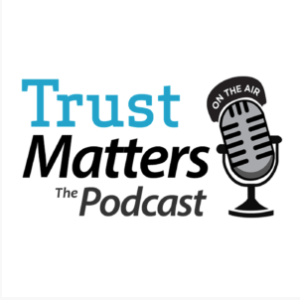Podcast Interview: The Importance of Trust in Remote Leadership
Learn how to connect with and read your team better, virtually. Understand how Intimacy and Self orientation are more important than ever.
Learn how to connect with and read your team better, virtually. Understand how Intimacy and Self orientation are more important than ever.
 We’ve all seen the movies, or worse still, possibly heard the words – “it’s not you, it’s me.”
We’ve all seen the movies, or worse still, possibly heard the words – “it’s not you, it’s me.”
A dramatic break up scene follows. We’re left in no doubt that the ‘you’ in the scenario was a) badly dealt with, and b) probably better off in the long run given that scoundrel ‘me,’ who is typically using the line as a cheap and insincere way to get out of the relationship.
But what if it’s true?
And what does that ‘breakup’ look like in the context of a business relationship? Many of us have had challenging client situations and relationships that just felt dysfunctional. And all too often we let ourselves believe that it is the other who is the problem, not our selves. The internal dialogue becomes “It’s not me – it’s you!”
It’s the reversal of the movie plot of the relationship breakdown. We start the blame game and potentially lose sight of what really happened. (And after all, what are business relationships other than just relationships with business as the context?).
My own “it really was me” moment played out over a year of frantic project delivery for a client with tight deadlines and ambitious goals; it involved a lot of shouting, mutual frustration and ultimately a breakup. Sound familiar?
I was saved from the worst of the blame game by a very astute new analyst in my consulting firm, who unknowingly helped bring the Trust Equation even more alive for me.
I was a big advocate of the Trusted Advisor approach, and in fact had taught the material to many people over the years. I had a story for each aspect of Credibility, Reliability, Intimacy and Self Orientation. The stories were the stuff of legends (in my own mind) and I could retell them with ease.
There was one – my go-to story – about ‘the challenging client and the breakup’ that I loved telling new hires. It had shock value and impact, and often provoked great discussion on the importance of balance in the trust equation. The story could last five minutes or 25 depending on the audience and the nuances added, but always ended, “….and that is how the client ruined our trusted relationship!”
That punchline came to an ignominious end one afternoon in a session with students in Kuala Lumpur. I had talked about how to demonstrate credibility with new ideas, reliability with delivery, and intimacy through shared experiences. After I went through my final go-to story about the client’s Self-orientation, an analyst put her hand up and asked, “You’ve talked a lot about what was in it for the client, but what did you want to get out of the relationship and project?”
A great question – and one I’d never examined. I knew I hadn’t enjoyed the project (successful though it was), and I knew the client was annoyed with me at the end (again, despite the good results) – but I’d never really examined the why. I had just thought “difficult client, next assignment please.”
Her next question went deeper. “It sounds like you just wanted to get off that project and didn’t care what happened to the client.” Ouch!
That evening I played back my own recollection of events. I realised that on at least three occasions I had thought only of my own objectives. First, I had wanted the project to be a success for me; I was looking for a promotion. Next, I had omitted inviting the client to a presentation we were making to their Board (the person was on holiday, but I could have asked them regardless). Finally, I had just wanted off the project – after all, it had been draining and challenging.
None of these instances may have been showstoppers on their own, but combined it meant my self-orientation was so poor that the client would had to have been made of stone not to distrust me. All those great results, all that thought leadership and intimacy had been slowly eroded by me wanting to achieve my goals – not theirs. The relationship had begun to break down – and all at the same time my inner voice was telling me, “It’s them not you!”
What a wake-up call for me, three years of believing they were the problem!
The next time I delivered the Trusted Advisor session the story hadn’t changed – but the punchline had. Instead of the casting the client as villain and me as the poor beaten up consultant, my conclusion was, “And this is how my self-orientation ruined a perfectly good trusted relationship.”
From time to time I still see that client in airports. We both acknowledge that it was a tough assignment, but we both know now that “It wasn’t you, it was me!” isn’t just a line in the movies. It’s real. And unlike in the movies, sometimes it’s really true.
 As the Novel Coronavirus pandemic disrupts business across the globe, companies are scrambling to assess and mitigate the near-term impact to their business. One of our clients recently shared an email he sent to his team of client relationship partners, reminding them to take a trust-building approach: reach out with information, but foremost with humanity.
As the Novel Coronavirus pandemic disrupts business across the globe, companies are scrambling to assess and mitigate the near-term impact to their business. One of our clients recently shared an email he sent to his team of client relationship partners, reminding them to take a trust-building approach: reach out with information, but foremost with humanity.
Dear [name],
Last week we sent some information to share with your clients regarding COVID19. In addition to the technical support information that we should be sharing, I want to reinforce the importance of communicating directly with our clients on a personal level as well. While it is natural, and even responsible, for us to see how we can support their business, now can be the defining moment to make personal connections and establish long-lasting trust.
While there will be immediate opportunities to help clients with risk assessments, supply chain optimisation, cost reduction and resource augmentation, etc., the objective of contacting them TODAY should be to see how COVID19 is affecting their job, but more importantly to simply see how they are doing personally. Some questions to consider:
- How is COVID19 impacting their day-to-day life?
- How is this impacting how they are making near-term business decisions?
- How is this impacting their direct reports and completing short term projects?
- What other pressures is this putting on them, both professionally and personally?
- How is this impacting them and their family?
During our conference last June, Charlie Green talked to us about what we can do to become our client’s Trusted Advisors. If you recall the “Trust Equation”, two key elements to establish trustworthiness include increasing “intimacy” while lowering our own “self-orientation”. Taking the time to personally call your clients – and not profiteering during crisis – is a good step towards gaining their trust and will pay dividends in the future.
Now is the time to speak with your clients and talk to them as a person and not as a target/fee source.
Kind regards,
Scott
While Scott specifically highlights intimacy and self-orientation, two factors of trustworthiness found in the trust equation, this email is also an excellent illustration of the four trust principles in practice.
We couldn’t have said it better ourselves.
Podcast: Embed
Subscribe to TrustMatters, The Podcast RSS
Welcome to the newest episode of Trust Matters, The Podcast. Listeners submit their personal questions about professional relationships, trust, and business situations to our in-house expert Charles H. Green, CEO, Trusted Advisor Associates and co-author of The Trusted Advisor.
A technology project manager writes in and asks, “I’ve been responding to postings in my field, I’ve got a solid resume, and I’m getting interviews, but – I’m not getting call-backs. In my interviews, I make sure to highlight the project management fits in my resume with the specific requirements they cite. But something isn’t working. Any advice?”
Looking for more advice on how to improve your interview skills? Join our next webinar How to Influence a Skeptical Audience: 3 Simple Steps
Do you want to send your questions to Charlie & Trust Matters, The Podcast?
We’ll answer almost ANY question about confusing, complicated or awkward business situations with clients, management, and colleagues. Email us: [email protected]
Podcast: Embed
Subscribe to TrustMatters, The Podcast RSS
Welcome to the newest episode of Trust Matters, The Podcast. Listeners submit their personal questions about professional relationships, trust, and business situations to our in-house expert Charles H. Green, CEO, Trusted Advisor Associates and co-author of The Trusted Advisor.
Dr. Peter Johnson, Clinical Professor of Marketing at Fordham’s Gabelli School of Business in New York. Dr. Johnson writes in to suggest we talk about the role of trust in a critical business transition – from a salesperson to a sales manager.
Learn more about the basic tools of trust and professional relationships. Play the podcast episode above and register for our next webinar on February 25.

Podcast: Embed
Subscribe to TrustMatters, The Podcast RSS
Welcome to the newest episode of Trust Matters, The Podcast. Listeners submit their personal questions about professional relationships, trust, and business situations to our in-house expert Charles H. Green, CEO, Trusted Advisor Associates and co-author of The Trusted Advisor.
A sales manager from Florida writes us in regards to the podcast’s material, “Great podcast but I feel like I’m operating three levels down in a larger system. Is there a bigger way of looking at trust? Did I miss the session on Trust 101?”
Learn more about the basic tools of trust and professional relationships. Play the podcast episode above and register for our next webinar on February 25.
Do you want to send your questions to Charlie & Trust Matters, The Podcast?
We’ll answer almost ANY question about confusing, complicated or awkward business situations with clients, management, and colleagues.
Email: [email protected]
We post new episodes every other week.
Subscribe to get the latest episodes:
Podcast: Embed
Subscribe to TrustMatters, The Podcast RSS
Welcome to the newest episode of Trust Matters, The Podcast. Listeners submit their personal questions about professional relationships, trust, and business situations to our in-house expert Charles H. Green, CEO, Trusted Advisor Associates and co-author of The Trusted Advisor.
The owner of a small consulting firm writes in and says: “We’re getting great inquiries but, after the first phone call or meeting, we’re not converting them. We’ve got great credentials and I know we can do the work. I’d guess that we’re only moving about 25% of our good leads into serious contention. Have you got any ideas?”
To read more about this topic read a recent post:
Do you want to send your questions to Charlie & Trust Matters, The Podcast?
We’ll answer almost ANY question about confusing, complicated or awkward business situations with clients, management, and colleagues.
Email: [email protected]
We post new episodes every other week.
Subscribe to get the latest episodes:
Podcast: Embed
Subscribe to TrustMatters, The Podcast RSS
Welcome to the newest episode of Trust Matters, The Podcast. Listeners submit their personal questions about professional relationships, trust, and business situations to our in-house expert Charles H. Green, CEO, Trusted Advisor Associates and co-author of The Trusted Advisor.
Charlie offers insight for leveraging honesty and credibility as well as managing expectations.
And if you want to read more on this topic, here is a recent blog post:
Do you want to send your questions to Charlie & Trust Matters, The Podcast?
We’ll answer almost ANY question about confusing, complicated or awkward business situations with clients, management, and colleagues.
Email: [email protected]
We post new episodes every other week.
Subscribe to get the latest episodes

Podcast: Embed
Subscribe to TrustMatters, The Podcast RSS
Welcome to the newest of Trust Matters, The Podcast. Listeners submit their personal questions about professional relationships, trust, and business situations to our in-house expert Charles H. Green, CEO, Trusted Advisor Associates and co-author of The Trusted Advisor.
A manager at a global consultancy firm asks, “How do I mend lost trust with a client whom we used to have an excellent relationship with? This relationship went sour due to a disagreement with one particular executive a few years back, and he still maintains a leadership role.”
Do you want to send your questions to Charlie & Trust Matters, The Podcast?
We’ll answer almost ANY question about confusing, complicated or awkward business situations with clients, management, and colleagues.
Email: [email protected]
We’ll be posting new episodes every other week.
Subscribe to get the latest episodes

Podcast: Embed
Subscribe to TrustMatters, The Podcast RSS
This is the newest of Trust Matters, The Podcast. Listeners submit their personal questions about professional relationships, trust, and business situations to our in-house expert Charles H. Green, CEO, Trusted Advisor Associates.
An experienced B2B, technology Product Leader asks, “Should I break out and become a SME Consultant, starting my own practice or should I continue working at bigger companies? What do I need to know about starting my own consulting business?”
Do you want to send your questions to Charlie & Trust Matters, The Podcast?
We’ll answer almost ANY question about confusing, complicated or awkward business situations with clients, management, and colleagues.
Email: [email protected]
We’ll be posting new episodes every other week.
Subscribe to get the latest episodes